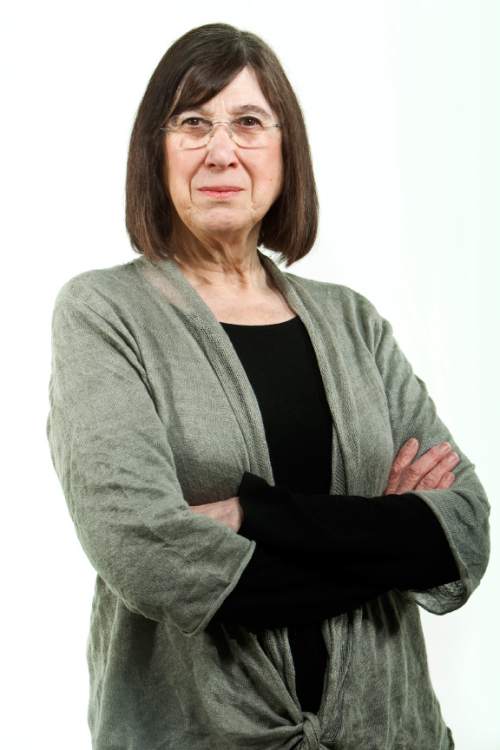This is an archived article that was published on sltrib.com in 2014, and information in the article may be outdated. It is provided only for personal research purposes and may not be reprinted.
Last of three parts
Born in rough and rugged Brown's Park in 1878, Ann Bassett was a rambunctious tomboy who took to Western life with a vengeance. She rode bareback, handled a gun, roped and tied calves, displayed a temperament known to get in the way of common sense, and was impervious to family discipline.
"I became a specialist at evading my mother's staff of authority," Ann wrote in the April 1952 Colorado Magazine. "With the speed of a wapiti I would race to the bunkhouse, that place of many attractions, where saddle-galled cowpunchers congregated to sing range ballads and squeak out doleful tunes on the fiddle."
During the Park's heyday, the Bassetts extended a welcoming hand to travelers, neighbors, friends, cattle rustlers and outlaws. Seeking refuge from the law in 1889, Robert Leroy Parker (Butch Cassidy) hid out and worked at the Bassett ranch. Elza Lay, who later joined the Wild Bunch, wintered in the Bassetts' bunkhouse and attended school with Josie.
Stories surfaced that Cassidy courted Josie and had a long-term, sporadic relationship with Ann. Rumors swirled around Ann's uncanny resemblance to Etta Place — the outlaw companion who traveled to New York and South America with the Sundance Kid (Harry Longabaugh) and Cassidy — declaring they were the same woman.
The Pinkerton National Detective Agency concurred. In 1900, when fiancé Matt Rash was murdered, shot point-blank in his cabin, Ann sought revenge against the assassin's employer, Ora Haley and his Two-Bar ranch. She patrolled the Divide between cattle barons and Park ranchers, shot any Two-Bar cattle crossing over, and meted out a paradoxical brand of justice by pushing others to their death in the swift-running Green River.
Ann then bought a cabin in Douglas Mountain. Working in concert with her brothers at the Bassett ranch she aspired to reach goals similar to her mother's, one of the frontier's first female ranchers. Not wanting to do the work herself however, the 26-year-old stunned Brown's Park residents and chose — some say, "entrapped" — Hi Bernard, 47, manager of the most-hated Two-Bar Ranch.
Ann proposed a business arrangement and marriage with the amply experienced cattleman. Hi was enraptured by her striking beauty and hourglass figure. They married in 1904 and the Bassett-Bernard Cattle Co. seemed to work.
In 1910, Bernard moved to Denver and the couple divorced.
Alone on her ranch, Ann continued her attack on Two-Bar by closing and cutting off access to the vital watering hole on her property. Retaliating, Two-Bar sent a stock detective to find evidence of rustling on her property. Three days later, freshly butchered meat was discovered hanging in Anne's storeroom. Ann and her new foreman were arrested for cattle thievery.
Whether innocent or guilty, Ann's trial in Craig, Colo., caused a sensation. A local opera house, rented for the trial, was packed with spectators waiting to see the fancily dressed, educated woman who spoke like city folk face off in a duel with the greedy cattle tycoon. It ended in a hung jury.
Set for re-trial in 1913, a credible witness for the defense was "legally" killed. The foreman disappeared. Haley was accused of tax evasion. And the Queen of Rustlers paraded triumphantly through town.
Historian Eileen Hallet Stone is the author of "Hidden History of Utah," a compilation of her Living History columns in the Salt Lake Tribune. She may be reached at ehswriter@aol.com —
Bassetts of Brown's Park
To read the earlier columns on the Bassett women, go to sltrib.com and search for "Living history."



